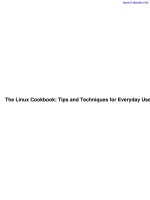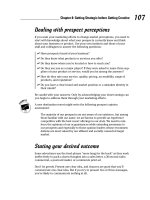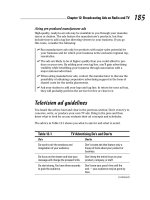ElasticSearch cookbook second edition by alberto paro
Bạn đang xem bản rút gọn của tài liệu. Xem và tải ngay bản đầy đủ của tài liệu tại đây (5.58 MB, 472 trang )
ElasticSearch
Cookbook
Second Edition
Over 130 advanced recipes to search, analyze, deploy,
manage, and monitor data effectively with ElasticSearch
Alberto Paro
BIRMINGHAM - MUMBAI
ElasticSearch Cookbook
Second Edition
Copyright © 2015 Packt Publishing
All rights reserved. No part of this book may be reproduced, stored in a retrieval system,
or transmitted in any form or by any means, without the prior written permission of the
publisher, except in the case of brief quotations embedded in critical articles or reviews.
Every effort has been made in the preparation of this book to ensure the accuracy of the
information presented. However, the information contained in this book is sold without
warranty, either express or implied. Neither the author, nor Packt Publishing and its
dealers and distributors, will be held liable for any damages caused or alleged to be
caused directly or indirectly by this book.
Packt Publishing has endeavored to provide trademark information about all the
companies and products mentioned in this book by the appropriate use of capitals.
However, Packt Publishing cannot guarantee the accuracy of this information.
First published: December 2013
Second edition: January 2015
Production reference: 1230115
Published by Packt Publishing Ltd.
Livery Place
35 Livery Street
Birmingham B3 2PB, UK.
ISBN 978-1-78355-483-6
www.packtpub.com
Credits
Author
Alberto Paro
Reviewers
Florian Hopf
Project Coordinator
Leena Purkait
Proofreaders
Ting Baker
Wenhan Lu
Samuel Redman Birch
Suvda Myagmar
Stephen Copestake
Dan Noble
Ameesha Green
Philip O'Toole
Lauren E. Harkins
Acquisition Editor
Rebecca Youé
Content Development Editor
Amey Varangaonkar
Technical Editors
Prajakta Mhatre
Indexer
Hemangini Bari
Graphics
Valentina D'silva
Production Coordinator
Manu Joseph
Rohith Rajan
Cover Work
Copy Editors
Hiral Bhat
Dipti Kapadia
Neha Karnani
Shambhavi Pai
Laxmi Subramanian
Ashwati Thampi
Manu Joseph
About the Author
Alberto Paro is an engineer, project manager, and software developer. He currently works
as a CTO at Big Data Technologies and as a freelance consultant on software engineering for
Big Data and NoSQL solutions. He loves to study emerging solutions and applications mainly
related to Big Data processing, NoSQL, natural language processing, and neural networks.
He began programming in BASIC on a Sinclair Spectrum when he was 8 years old, and to
date, has collected a lot of experience using different operating systems, applications,
and programming.
In 2000, he graduated in computer science engineering at Politecnico di Milano with a
thesis on designing multiuser and multidevice web applications. He assisted professors
at the university for about a year. He then came in contact with The Net Planet Company
and loved their innovative ideas; he started working on knowledge management solutions
and advanced data mining products. In summer 2014, his company was acquired by a Big
Data technologies company, where he currently works mainly using Scala and Python on
state-of-the-art big data software (Spark, Akka, Cassandra, and YARN). In 2013, he started
freelancing as a consultant for Big Data, machine learning, and ElasticSearch.
In his spare time, when he is not playing with his children, he likes to work on open source
projects. When he was in high school, he started contributing to projects related to the GNOME
environment (gtkmm). One of his preferred programming languages is Python, and he wrote
one of the first NoSQL backends on Django for MongoDB (Django-MongoDB-engine). In 2010,
he began using ElasticSearch to provide search capabilities to some Django e-commerce
sites and developed PyES (a Pythonic client for ElasticSearch), as well as the initial part of the
ElasticSearch MongoDB river. He is the author of ElasticSearch Cookbook as well as a technical
reviewer Elasticsearch Server, Second Edition, and the video course, Building a Search Server
with ElasticSearch, all of which are published by Packt Publishing.
Acknowledgments
It would have been difficult for me to complete this book without the support of a large
number of people.
First, I would like to thank my wife, my children, and the rest of my family for their
valuable support.
On a more personal note, I'd like to thank my friend, Mauro Gallo, for his patience.
I'd like to express my gratitude to everyone at Packt Publishing who've been involved in the
development and production of this book. I'd like to thank Amey Varangaonkar for guiding this
book to completion, and Florian Hopf, Philip O'Toole, and Suvda Myagmar for patiently going
through the first drafts and providing valuable feedback. Their professionalism, courtesy,
good judgment, and passion for this book are much appreciated.
About the Reviewers
Florian Hopf works as a freelance software developer and consultant in Karlsruhe,
Germany. He familiarized himself with Lucene-based search while working with different
content management systems on the Java platform. He is responsible for small and large
search systems, on both the Internet and intranet, for web content and application-specific
data based on Lucene, Solr, and ElasticSearch. He helps to organize the local Java User
Group as well as the Search Meetup in Karlsruhe, and he blogs at .
Wenhan Lu is currently pursuing his master's degree in computer science at Carnegie
Mellon University. He has worked for Amazon.com, Inc. as a software engineering intern.
Wenhan has more than 7 years of experience in Java programming. Today, his interests
include distributed systems, search engineering, and NoSQL databases.
Suvda Myagmar currently works as a technical lead at a San Francisco-based start-up
called Expect Labs, where she builds developer APIs and tunes ranking algorithms for
intelligent voice-driven, content-discovery applications. She is the co-founder of Piqora, a
company that specializes in social media analytics and content management solutions for
online retailers. Prior to working for start-ups, she worked as a software engineer at Yahoo!
Search and Microsoft Bing.
Dan Noble is a software engineer from Washington, D.C. who has been a big fan of
ElasticSearch since 2011. He's the author of the Python ElasticSearch driver called rawes,
available at Dan focuses his efforts on the
development of web application design, data visualization, and geospatial applications.
Philip O'Toole has developed software and led software development teams for more than
15 years for a variety of applications, including embedded software, networking appliances,
web services, and SaaS infrastructure. His most recent work with ElasticSearch includes
leading infrastructure design and development of Loggly's log analytics SaaS platform, whose
core component is ElasticSearch. He is based in the San Francisco Bay Area and can be found
online at .
www.PacktPub.com
Support files, eBooks, discount offers, and more
For support files and downloads related to your book, please visit www.PacktPub.com.
Did you know that Packt offers eBook versions of every book published, with PDF and ePub
files available? You can upgrade to the eBook version at www.PacktPub.com, and as a
print book customer, you are entitled to a discount on the eBook copy. Get in touch with
us at for more details.
At www.PacktPub.com, you can also read a collection of free technical articles, sign up
for a range of free newsletters, and receive exclusive discounts and offers on Packt books
and eBooks.
TM
/>
Do you need instant solutions to your IT questions? PacktLib is Packt's online digital book
library. Here, you can search, access, and read Packt's entire library of books.
Why subscribe?
ff
Fully searchable across every book published by Packt
ff
Copy and paste, print, and bookmark content
ff
On demand and accessible via a web browser
Free access for Packt account holders
If you have an account with Packt at www.PacktPub.com, you can use this to access
PacktLib today and view nine entirely free books. Simply use your login credentials for
immediate access.
To Giulia and Andrea, my extraordinary children.
Table of Contents
Preface1
Chapter 1: Getting Started
7
Introduction7
Understanding nodes and clusters
8
Understanding node services
10
Managing your data
11
Understanding clusters, replication, and sharding
13
Communicating with ElasticSearch
16
Using the HTTP protocol
17
Using the native protocol
19
Using the Thrift protocol
21
Chapter 2: Downloading and Setting Up
23
Chapter 3: Managing Mapping
43
Introduction23
Downloading and installing ElasticSearch
24
Setting up networking
27
Setting up a node
30
Setting up for Linux systems
32
Setting up different node types
33
Installing plugins in ElasticSearch
35
Installing a plugin manually
39
Removing a plugin
40
Changing logging settings
41
Introduction44
Using explicit mapping creation
44
Mapping base types
47
Mapping arrays
50
Mapping an object
52
Table of Contents
Mapping a document
Using dynamic templates in document mapping
Managing nested objects
Managing a child document
Adding a field with multiple mappings
Mapping a geo point field
Mapping a geo shape field
Mapping an IP field
Mapping an attachment field
Adding metadata to a mapping
Specifying a different analyzer
Mapping a completion suggester
Chapter 4: Basic Operations
54
57
60
62
65
67
69
70
71
74
75
77
81
Introduction82
Creating an index
82
Deleting an index
85
Opening/closing an index
86
Putting a mapping in an index
87
Getting a mapping
89
Deleting a mapping
90
Refreshing an index
92
Flushing an index
93
Optimizing an index
94
Checking if an index or type exists
96
Managing index settings
97
Using index aliases
100
Indexing a document
102
Getting a document
106
Deleting a document
109
Updating a document
111
Speeding up atomic operations (bulk operations)
114
Speeding up GET operations (multi GET)
117
Chapter 5: Search, Queries, and Filters
119
Introduction120
Executing a search
120
Sorting results
128
Highlighting results
131
Executing a scan query
133
Suggesting a correct query
136
Counting matched results
139
ii
Table of Contents
Deleting by query
Matching all the documents
Querying/filtering for a single term
Querying/filtering for multiple terms
Using a prefix query/filter
Using a Boolean query/filter
Using a range query/filter
Using span queries
Using a match query
Using an ID query/filter
Using a has_child query/filter
Using a top_children query
Using a has_parent query/filter
Using a regexp query/filter
Using a function score query
Using exists and missing filters
Using and/or/not filters
Using a geo bounding box filter
Using a geo polygon filter
Using geo distance filter
Using a QueryString query
Using a template query
140
142
144
148
151
153
156
158
162
164
166
168
170
172
174
178
180
182
183
185
187
190
Chapter 6: Aggregations195
Introduction195
Executing an aggregation
196
Executing the stats aggregation
201
Executing the terms aggregation
203
Executing the range aggregation
208
Executing the histogram aggregation
212
Executing the date histogram aggregation
216
Executing the filter aggregation
219
Executing the global aggregation
221
Executing the geo distance aggregation
223
Executing nested aggregation
227
Executing the top hit aggregation
230
Chapter 7: Scripting235
Introduction235
Installing additional script plugins
236
Managing scripts
238
Sorting data using script
241
iii
Table of Contents
Computing return fields with scripting
Filtering a search via scripting
Updating a document using scripts
245
248
251
Chapter 8: Rivers257
Introduction257
Managing a river
258
Using the CouchDB river
261
Using the MongoDB river
264
Using the RabbitMQ river
267
Using the JDBC river
272
Using the Twitter river
278
Chapter 9: Cluster and Node Monitoring
283
Chapter 10: Java Integration
329
Introduction283
Controlling cluster health via the API
284
Controlling cluster state via the API
287
Getting cluster node information via the API
291
Getting node statistics via the API
297
Managing repositories
302
Executing a snapshot
305
Restoring a snapshot
308
Installing and using BigDesk
310
Installing and using ElasticSearch Head
316
Installing and using SemaText SPM
322
Installing and using Marvel
325
Introduction329
Creating an HTTP client
330
Creating a native client
335
Managing indices with the native client
338
Managing mappings
341
Managing documents
345
Managing bulk actions
348
Building a query
351
Executing a standard search
355
Executing a search with aggregations
359
Executing a scroll/scan search
363
iv
Table of Contents
Chapter 11: Python Integration
369
Chapter 12: Plugin Development
395
Introduction369
Creating a client
370
Managing indices
374
Managing mappings
377
Managing documents
380
Executing a standard search
385
Executing a search with aggregations
390
Introduction395
Creating a site plugin
396
Creating a native plugin
398
Creating a REST plugin
408
Creating a cluster action
414
Creating an analyzer plugin
421
Creating a river plugin
425
Index435
v
Preface
One of the main requirements of today's applications is search capability. In the market, we
can find a lot of solutions that answer this need, both in commercial as well as the open source
world. One of the most used libraries for searching is Apache Lucene. This library is the base of
a large number of search solutions such as Apache Solr, Indextank, and ElasticSearch.
ElasticSearch is written with both cloud and distributed computing in mind. Its main author,
Shay Banon, who is famous for having developed Compass (), released the first version of ElasticSearch in March 2010.
Thus, the main scope of ElasticSearch is to be a search engine; it also provides a lot of features
that allow you to use it as a data store and an analytic engine using aggregations.
ElasticSearch contains a lot of innovative features: it is JSON/REST-based, natively distributed
in a Map/Reduce approach, easy to set up, and extensible with plugins. In this book, we will
go into the details of these features and many others available in ElasticSearch.
Before ElasticSearch, only Apache Solr was able to provide some of these functionalities, but
it was not designed for the cloud and does not use the JSON/REST API. In the last few years,
this situation has changed a bit with the release of the SolrCloud in 2012. For users who
want to more thoroughly compare these two products, I suggest you read posts by Rafał Kuć,
available at />ElasticSearch is a product that is in a state of continuous evolution, and new functionalities
are released by both the ElasticSearch company (the company founded by Shay Banon to
provide commercial support for ElasticSearch) and ElasticSearch users as plugins (mainly
available on GitHub).
Preface
Founded in 2012, the ElasticSearch company has raised a total of USD 104 million in
funding. ElasticSearch's success can best be described by the words of Steven Schuurman,
the company's cofounder and CEO:
It's incredible to receive this kind of support from our investors over such a short
period of time. This speaks to the importance of what we're doing: businesses are
generating more and more data—both user- and machine-generated—and it has
become a strategic imperative for them to get value out of these assets, whether
they are starting a new data-focused project or trying to leverage their current
Hadoop or other Big data investments.
ElasticSearch has an impressive track record for its search product, powering customers
such as Fourquare (which indexes over 50 million venues), the online music distribution
platform SoundCloud, StumbleUpon, and the enterprise social network Xing, which has 14
million members. It also powers GitHub, which searches 20 terabytes of data and 1.3 billion
files, and Loggly, which uses ElasticSearch as a key value store to index clusters of data for
rapid analytics of logfiles.
In my opinion, ElasticSearch is probably one of the most powerful and easy-to-use search
solutions on the market. Throughout this book and these recipes, the book's reviewers and
I have sought to transmit our knowledge, passion, and best practices to help readers better
manage ElasticSearch.
What this book covers
Chapter 1, Getting Started, gives you an overview of the basic concepts of ElasticSearch and
the ways to communicate with it.
Chapter 2, Downloading and Setting Up, shows the basic steps to start using ElasticSearch,
from the simple installation to running multiple nodes.
Chapter 3, Managing Mapping, covers the correct definition of data fields to improve both
the indexing and search quality.
Chapter 4, Basic Operations, shows you the common operations that are required to both
ingest and manage data in ElasticSearch.
Chapter 5, Search, Queries, and Filters, covers the core search functionalities in ElasticSearch.
The search DSL is the only way to execute queries in ElasticSearch.
Chapter 6, Aggregations, covers another capability of ElasticSearch: the possibility to execute
analytics on search results in order to improve the user experience and drill down the information.
Chapter 7, Scripting, shows you how to customize ElasticSearch with scripting in different
programming languages.
Chapter 8, Rivers, extends ElasticSearch to give you the ability to pull data from different
sources such as databases, NoSQL solutions, and data streams.
2
Preface
Chapter 9, Cluster and Node Monitoring, shows you how to analyze the behavior of a
cluster/node to understand common pitfalls.
Chapter 10, Java Integration, describes how to integrate ElasticSearch in a Java application
using both REST and native protocols.
Chapter 11, Python Integration, covers the usage of the official ElasticSearch Python client
and the Pythonic PyES library.
Chapter 12, Plugin Development, describes how to create the different types of plugins:
site and native plugins. Some examples show the plugin skeletons, the setup process,
and their build.
What you need for this book
For this book, you will need a computer running a Windows OS, Macintosh OS, or Linux
distribution. In terms of the additional software required, you don't have to worry, as all the
components you will need are open source and available for every major OS platform.
For all the REST examples, the cURL software ( will be used to
simulate the command from the command line. It comes preinstalled on Linux and Mac OS X
operating systems. For Windows, it can be downloaded from its site and added in a PATH that
can be called from the command line.
Chapter 10, Java Integration, and Chapter 12, Plugin Development, require the Maven build
tool ( which is a standard tool to manage builds, packaging,
and deploying in Java. It is natively supported on most of the Java IDEs, such as Eclipse and
IntelliJ IDEA.
Chapter 11, Python Integration, requires the Python Interpreter installed on your computer.
It's available on Linux and Mac OS X by default. For Windows, it can be downloaded from the
official Python website (). The examples in this chapter have been
tested using version 2.x.
Who this book is for
This book is for developers and users who want to begin using ElasticSearch or want to improve
their knowledge of ElasticSearch. This book covers all the aspects of using ElasticSearch and
provides solutions and hints for everyday usage. The recipes have reduced complexity so it is
easy for readers to focus on the discussed ElasticSearch aspect and easily and fully understand
the ElasticSearch functionalities.
The chapters toward the end of the book discuss ElasticSearch integration with Java and Python
programming languages; this shows the users how to integrate the power of ElasticSearch into
their Java- and Python-based applications.
3
Preface
Chapter 12, Plugin Development, talks about the advanced use of ElasticSearch and its core
extensions, so you will need some prior Java knowledge to understand this chapter fully.
Sections
This book contains the following sections:
Getting ready
This section tells us what to expect in the recipe, and describes how to set up any software or
any preliminary settings needed for the recipe.
How to do it…
This section characterizes the steps to be followed for "cooking" the recipe.
How it works…
This section usually consists of a brief and detailed explanation of what happened in the
previous section.
There's more…
It consists of additional information about the recipe in order to make the reader more
anxious about the recipe.
See also
This section may contain references to the recipe.
Conventions
In this book, you will find a number of styles of text that distinguish between different
kinds of information. Here are some examples of these styles, and an explanation of
their meaning.
Code words in text, database table names, folder names, filenames, file extensions,
pathnames, dummy URLs, user input, and Twitter handles are shown as follows:
"After the name and type parameters, usually a river requires an extra configuration
that can be passed in the _meta property."
4
Preface
A block of code is set as follows:
cluster.name: elasticsearch
node.name: "My wonderful server"
network.host: 192.168.0.1
discovery.zen.ping.unicast.hosts: ["192.168.0.2","192.168.0.3[93009400]"]
When we wish to draw your attention to a particular part of a code block, the relevant lines or
items are set in bold:
cluster.name: elasticsearch
node.name: "My wonderful server"
network.host: 192.168.0.1
discovery.zen.ping.unicast.hosts: ["192.168.0.2","192.168.0.3[93009400]"]
Any command-line input or output is written as follows:
curl -XDELETE 'http://127.0.0.1:9200/_river/my_river/'
New terms and important words are shown in bold. Words you see on the screen, in menus
or dialog boxes, for example, appear in the text like this: "If you don't see the cluster statistics,
put your node address to the left and click on the connect button."
Warnings or important notes appear in a box like this.
Tips and tricks appear like this.
Reader feedback
Feedback from our readers is always welcome. Let us know what you think about this book—
what you liked or may have disliked. Reader feedback is important for us to develop titles you
really get the most out of.
To send us general feedback, simply send an e-mail to , and
mention the book title via the subject of your message.
If there is a topic you have expertise in and you are interested in either writing or contributing
to a book, see our author guide at www.packtpub.com/authors.
5
Preface
Customer support
Now that you are the proud owner of a Packt book, we have a number of things to help you get
the most from your purchase.
Downloading the example code
You can download the example code files for all Packt books you have purchased from your
account at . If you purchased this book elsewhere, you can
visit and register to have the files e-mailed directly
to you. The code bundle is also available on GitHub at />elasticsearch-cookbook-second-edition.
Errata
Although we have taken every care to ensure the accuracy of our content, mistakes do happen.
If you find a mistake in one of our books—maybe a mistake in the text or the code—we would be
grateful if you could report this to us. By doing so, you can save other readers from frustration
and help us improve subsequent versions of this book. If you find any errata, please report them
by visiting selecting your book, clicking on
the Errata Submission Form link, and entering the details of your errata. Once your errata are
verified, your submission will be accepted and the errata will be uploaded to our website or
added to any list of existing errata under the Errata section of that title.
To view the previously submitted errata, go to />content/support and enter the name of the book in the search field. The required
information will appear under the Errata section.
Piracy
Piracy of copyrighted material on the Internet is an ongoing problem across all media.
At Packt, we take the protection of our copyright and licenses very seriously. If you come
across any illegal copies of our works, in any form, on the Internet, please provide us with
the location address or website name immediately so we can pursue a remedy.
Please contact us at with a link to the suspected pirated material.
We appreciate your help in protecting our authors, and our ability to bring you valuable content.
Questions
If you have a problem with any aspect of this book, you can contact us at questions@
packtpub.com, and we will do our best to address the problem.
6









